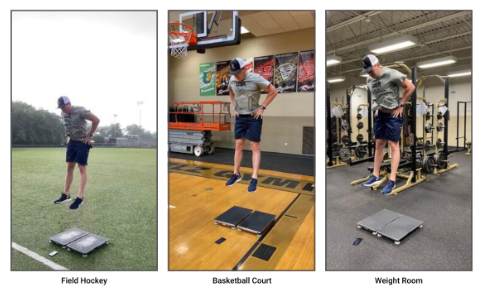The most obvious and so often overlooked element: The surface you put your force plates on.
We recommend you test on as hard a surface as possible. In many instances, the testing surface can have a profound impact on several metrics calculated during testing.
Summary
-
Try to position your force plates on as solid, level, and flat ground as possible.
-
Try to make sure that you understand how the key points of your data are found and the effect that the floor surface (and other things) can have on the quality and utility of your data.
-
If you do test on multiple surfaces, know what the difference between surfaces will be and compare data accordingly.
-
Take responsibility for your data, own it!

Testing Protocol-
- Moved the plates to the destination
- Setup the plates, standing on them until they were flush to the surface with no wiggle
- Turned on the plates, connected them to the tablet
- Zeroed them in and tested the zero by using ‘Free Run’ mode for a period of 15 seconds
- Once zero was established, the testing began
- Three attempts were conducted on each surface, and the best jump height of the 3 was used
- Repeated at the next location.
For more detailed information, check out this blog post Dr. Lake put together examining the impact different surfaces have on various metrics.
If this doesn't resolve your issue, please contact us at techsupport@hawkindynamics.com
-2.png?height=120&name=Hawkin%20Logo%20(2)-2.png)